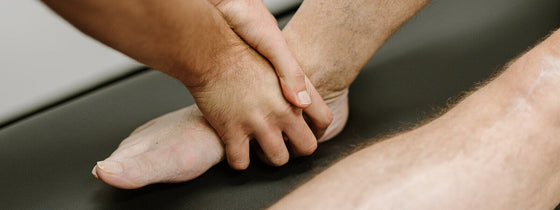Stage 2 of ACL rehabilitation is the strength and control phase. This is where the fun really begins. Your knee is no longer sore, swollen and cranky, you’re walking around more normally and feeling a bit more confident with your newly reconstructed knee. Now is the time where we start to load you and restore your strength and control. But how do you know where to start or what to do?
The key goals of this phase include:
Physiotherapists are your experts for everything ACL rehabilitation. They will know little tricks of the trade to tweak exercises to get you feeling them in the right spots, taking load off your knee and making sure your sessions are as effective as they possibly can be.
The reality is, people can show compensatory movement patterns up to six months post surgery. This is why it is imperative to have the eagle eye of someone who knows all about the nuances of movement keeping an eye on you and cuing you to use the right muscles with the correct movement patterns. Supervised exercise sessions through this phase can help you get the maximum out of your sessions and we provide this at OHL in the form of our extensive Group Physiotherapy Class program.
This does not mean going bull at a gate. We still have to be respectful of your knee and listen to what it is telling us. If it is excessively sore or swelling during or after sessions things need to be modified around this and you may need some soft tissue management because you will re discover the feeling of DOMS and muscle tightness, which our resident Myotherapist Mike can help you with!
A big focus of this phase is getting symmetry between your limbs, both in movement patterns and strength. Research shows that the closer we can get your quadriceps strength to your non-injured leg, the less likely you are to re rupture upon return to sport.
You will also have a significant deficiency in strength wherever the surgeon has taken the graft from. Commonly this will be the hamstrings, quadriceps or patella. This means not only are we rehabilitating your knee injury but we also have a significant muscle injury to deal with. Depending on your graft type your management will be different. This means a lot of single leg loading to ensure your dominant leg does not take over while we try to get strength and length back into your muscles. Your hamstring for instance – needs to be strong and long to tolerate the loads of running. We would hate to get you back to running only for you to have to stop because you sustain a hamstring strain! This is why we use a lot of technology such as our Nordbord to track your strength.
Ultimately by the end of this stage, which we also call ACL 12 week program, we hope to have you strong and moving with optimal movement patterns so that you will tolerate the stresses of more plyometric loads and running without putting excess strain onto your graft. This point is only achieved once you have ticked certain criteria that ensures you will be safe to start this type of loading. If you are looking for more information about this phase and/or the whole ACL rehabilitation journey, please reach out to us via 9431 5955 or contact us via admin@optimalhealthlab.com.au

If you're experiencing back or neck pain with neurological signs and symptoms, a thorough neurological examination is crucial for accurate assessment and effective treatment. In this Optimal Tip learn more about what we mean by completing a neurological exam!

Squats, deadlifts, and calf raises are key movement patterns that should be part of every strength and conditioning program—regardless of age and activity level. These functional movements support joint health, improve posture and balance, and reduce the risk of injury while building strength where it matters most.

A ganglion cyst is a fluid-filled swelling that typically forms over a joint or tendon sheath, causing discomfort and pain, especially when pressing against nerves or joints. Proper assessment and treatment, including physiotherapy, are essential for managing symptoms and improving function in the presence of a ganglion in your hand, foot, or wrist.